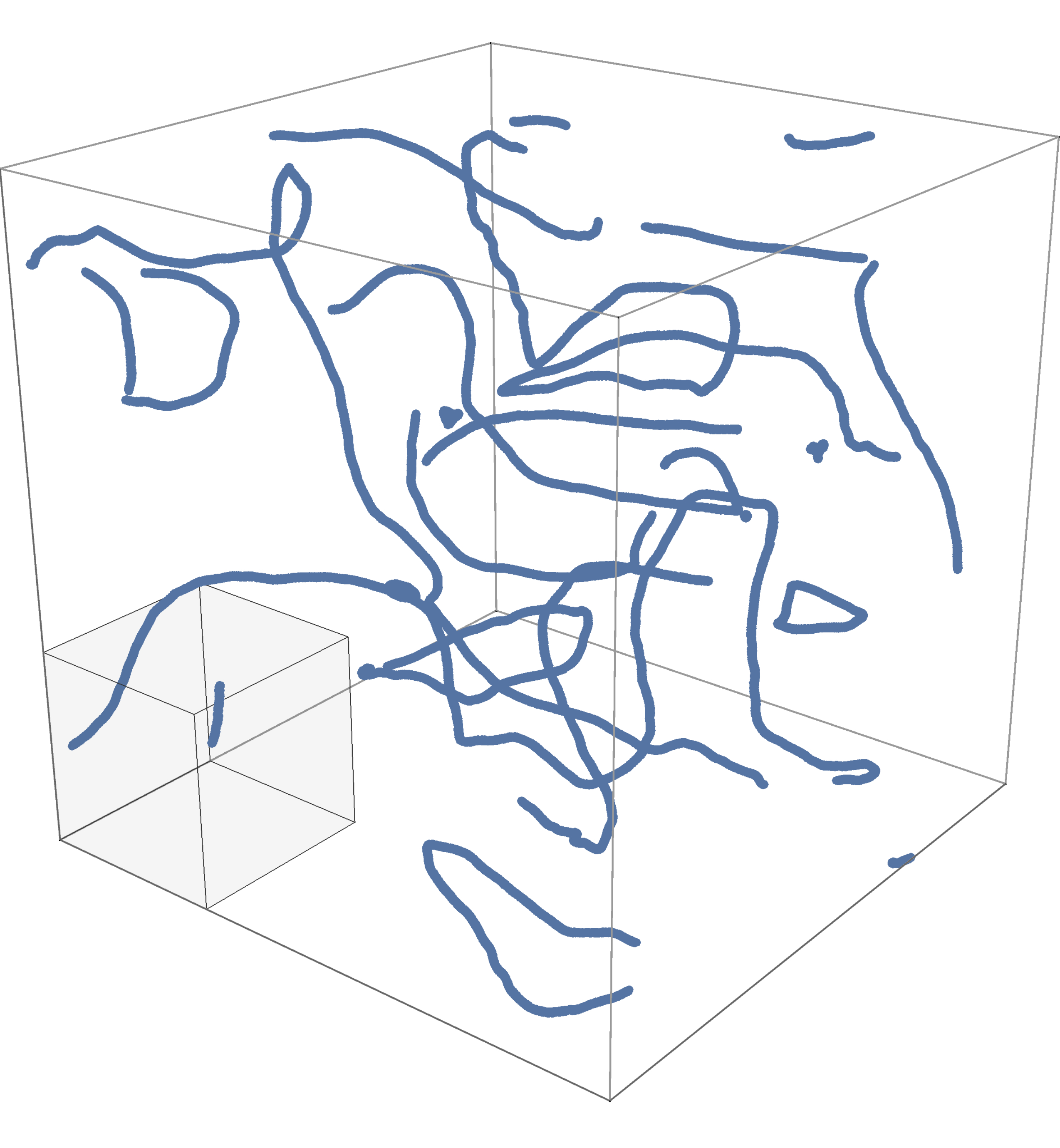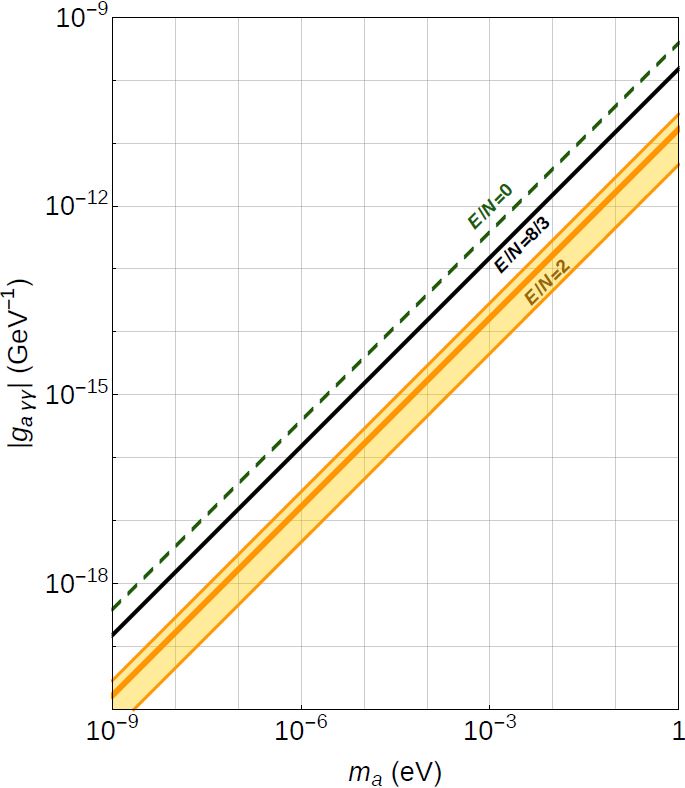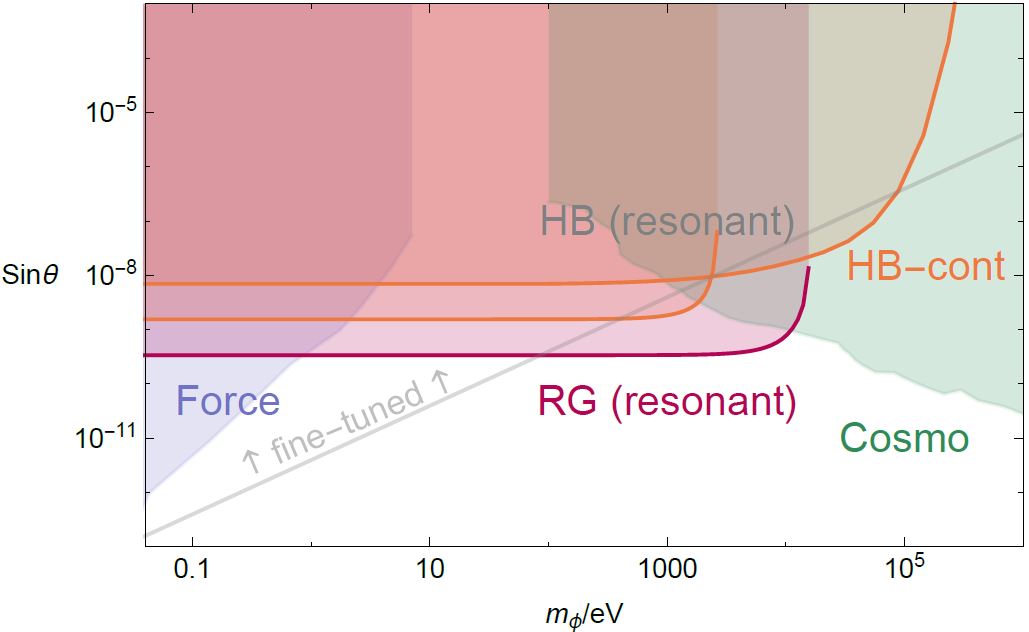Edward Hardy
Research
My papers can be found on Inspires.
I am interested in a range of topics all broadly in the area of Beyond the
Standard Model physics, and particularly Dark Matter. There are many promising
candidates for Dark Matter that have not been fully explored, but could soon be
discovered! Some examples of things I've worked on so far are discussed below,
and the University of Liverpool has a collaboration between theorists and
experimentalists on Dark Matter and Dark Energy.
Axions
Both the QCD axion, and other light
axion-like-particles are excellent candidates to be dark matter (DM). Not only
are they well motivated from string theory, but their dynamics in the early
universe automatically produces a significant relic abundance, which behaves
like cold dark matter and can easily match the observed density without having
to add any extra symmetries by hand to prevent them decaying. The case of the
QCD axion is even more interesting, since this is introduced for a totally
unrelated purpose, solving the Standard Model strong CP problem.
The complex dynamics of axions make
many aspects of their phenomenology challenging to study, but also extremely
theoretically interesting. Research in this areas includes aspects of cosmology
and astrophysics, strongly coupled gauge theories, string phenomenology, and
big numerical simulations, as well as having crucial links to experimental and
observational work!
Papers I've written on this topic
include an analysis of the properties
and cosmology of the QCD axion, in which we used chiral perturbation
theory, data from lattice simulations, and finite temperature QFT to obtain
precise and reliable results that are important for interpreting experimental
data. I'm also interested miniclusters
formed of axion-like-particles. These are dense astrophysical objects made
out of axion-like-particles, which could provide a way of detecting or
constraining large classes of models using astronomical observations.


Left:
An example snapshot from a numerical simulation of axion strings. Right: The
minimum QCD axion coupling to photons as a function of the axion mass for
different models (due to a contribution to this coupling from mixing with the
pion, it is extremely rare for models to have a smaller coupling than that
shown for E/N=2).
Glueballs
Another possible candidate to be dark
matter is a glueball of a hidden sector gauge group that runs into strong coupling.
Such hidden sectors are very common in string theory, and in large classes of
string compactifications seem to be generic.
The glueballs that naturally appear in
these hidden sectors are good candidates for DM, but there's a problem. Unless
the temperature of the hidden sector is initially much lower than that of the
visible sector, the glueball relic abundance is much too large (although very
asymmetric initial temperatures might be possible in some models of reheating after inflation).
Luckily there's a solution: string theory models also often have light moduli,
and these can decay at relatively late times during the Universe's cosmological
history. In a recent paper,
I showed that this greatly expands the viable parameter space of glueball DM
models.

Constraints
on the glueball relic abundance in models with a thermal cosmology. Lambda is
the hidden sector confinement scale, and B is the inflaton's branching
fraction to the hidden sector. To get the observed relic abundance B must be extremely
small, corresponding to a much lower temperature in the hidden sector
compared to the visible sector, which seems unusual from a UV perspective.
Modifying the cosmological history allows for a hidden sector temperature
much closer to that of the visible sector.
Finite temperature QFT and astrophysical
constraints on new light particles
Important constraints on new light
particles come from observations of stars and other astrophysical objects, such
as supernova. The new particles can be produced in the hot cores of these
objects, changing the way that energy is transported. In some cases this
results in the system cooling down, whereas in others as energy is removed a
star contracts and heats up. Either way, if the new particles are produced at a
high enough rate, this will lead to significant differences between models and
observations.
However, since the new light particles
are produced in an environment with high temperature and density it is
important to consistently include effects from these in the analysis. For
example, Lorentz symmetry is broken by the medium's rest frame, and as a result
the photon gets a longitudinal degree of freedom. In a recent paper I showed that this can
be resonantly converted to a new light vector boson, or scalar, dramatically
increasing the production rate, and as a result strengthening the constraints
on the couplings of new particles to the visible sector by more than an order
of magnitude.


Left:
Examples of the Feynman diagrams that need to be included when calculating
the production rate of new particles inside a star. Mixing between the medium
and the new particles can lead to much more efficient production, compared to
if these effects were neglected. Right: Constraints on the mixing sin theta
of a new light scalar with the Standard Model Higgs from observations of red
giant (RG) and horizontal branch (HB) stars. By including resonance effects, we
find that a mixings as small as 10^-9 are ruled out.
New Approaches to the hierarchy problem
I am also interested in new solutions
to the hierarchy problem, especially given the lack of a hint of new physics
from the LHC. Some of these include new axion-like-particles, and often rely on
dynamics in the early universe and finite temperature effects (for example, a
model I proposed in this paper)
Heterotic String theory and its phenomenology
On a more formal side, I'm interested
in heterotic string theory and in particular the moduli that appear when the
extra spatial dimensions are compactified. These are new light scalars, which
must obtain masses in order to be consistent with observations from 5th force
experiments, and successful predictions from big bang nucleosynthesis. The
number and properties of the moduli from a compactification are mathematically
interesting, and phenomenologically important.
Computer code and algorithms
I've developed a
range of small and not so small numerical codes, which at some point I will
make-available in open source format.